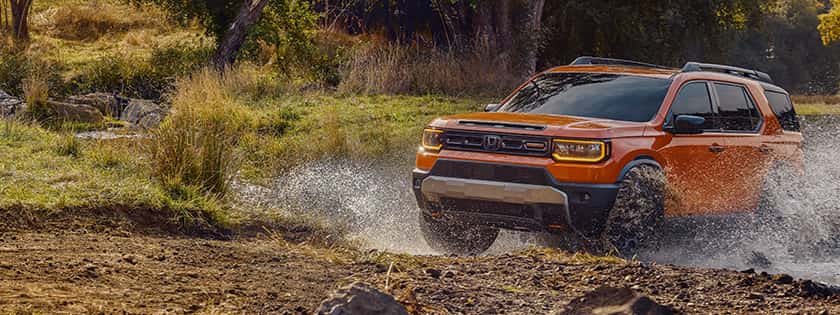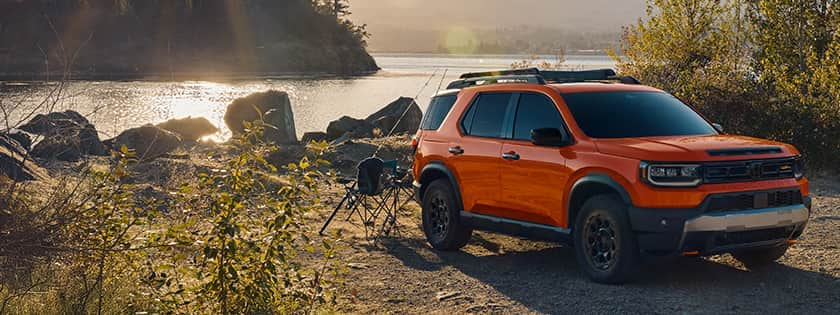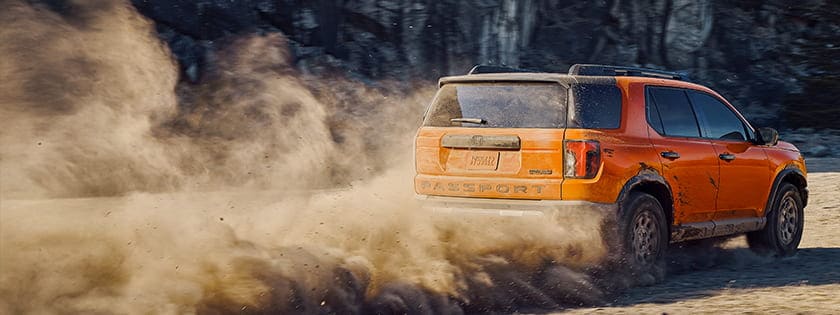"Would you rather have the Cobra Daytona over a Ferrari 250 GTO?" asks a friend after listening to me babble on about a recent test-drive of the rarest and most valuable member of the Shelby family.
It's a tough choice between these fabled rivals from the 1964 and '65 seasons, the swansong of the great GT era when sports-racers still had close links to road cars.
Call it irrational, but it has to be the Ford V8-powered Shelby Daytona Coupe.
Here's Why
Since I was a boy, its blend of muscular looks, exotic rarity and brutal performance has gripped me. Enthusiasts are spoiled today by the accessibility to such cars, but I didn't even see a Daytona Coupe until I was in my 30s.
I had all of the books and models, knew the chassis numbers by heart and never tired of the captivating story of the coupe's '63 birth led by designer Peter Brock. Combine that magnetic appeal with one of the most colorful rivalries in racing and I can't help but root for the Guardsman Blue, white-striped upstart that dared to challenge the might of Ferrari.
Seeing It in the Metal
As I slip my hand through the open side window to find the door catch of CSX 2300 — the third of six ever built — all of that charisma conjures a wealth of images, from the determined development in Shelby's cramped Venice Beach facility in California to its last FIA race in the heart of Mafia country.
The aluminum door is flyweight, and it's a struggle to contort yourself into the basic Caterham bucket race seat that's replaced the original padded vinyl design. Inside it's dark with a black-painted satin finish and five instruments — a Smiths rev counter with Stewart-Warner ancillaries all to the right of the wheel — and a phalanx of toggles on the wide center console.
It's stark compared to the glamorous, extrovert exterior. With a clear view through the wide windshield and slim pillars down the long hood, it's all logical, purposeful and surprisingly roomy. Brock ensured that it fit everyone from stocky Davey MacDonald to sinewy expat Ken Miles. The pedals pivot from the floor and their AC logos acknowledge the origins of the chassis that was built in Thames Ditton before shipment to California.
The wood-rimmed wheel is a smaller replacement item with an extended boss because CSX 2300's modern-day drivers Tom Kristensen and Kenny Bräck demanded more room and sharper response from the rack-and-pinion steering. The cockpit is tighter and safer than it was for the likes of Bob Bondurant, Jochen Neerpasch, Jo Schlesser and Sir John Whitmore, who all raced this very chassis. There's now a beefy roll cage with four-point harness. Amazingly, no one has ever been seriously injured in a Daytona Cobra despite its fearsome 198-mph performance.
Hearing It Roar
Firing up requires just three switches — fuel pump, ignition, then starter. Quickly the greedy downdraft 48IDA Webers feed the simple iron-block pushrod V8, and it erupts into life with a wild roar that rocks the car and blasts out under the sill in front of those magnificent Halibrand wheels. A Cobra roadster sounds spectacular on side pipes, but being strapped into this 2,300-pound coupe doubles the intensity of that wicked volcanic din.
Floor the throttle and it sounds like a manic steam hammer at full tilt. The awesome performance matches that aural drama, and it's easy to appreciate the 4.4-second 0-60-mph time that Car and Driver clocked in '66 as you rocket through the cogs. The short gearing and instant torque will easily get the tail snaking as you yank the stubby T-10 gearlever across the H-gate. Invasive heat and rumble all add to the sensations of the Daytona's spectacular launch.
The action of the smaller wheel is heavy when maneuvering, but lightens as the pace builds. You have to grip the rim strongly because the messages back from the road are clear, but the sharp mechanism goads you on. The stiffer chassis delivers a tauter feel than a roadster, yet, as Bräck confirms, you can still feel the flimsy tubular frame twist under heavy load in fast turns, despite the extra bracing. But as Jack Sears, who raced CSX 2300 at Reims, recalls: "It was a big step forward over the roadster. With that you'd just grit your teeth and get on with it, but the Coupe had good handling and was fun to drive."
With 390 horsepower, it's easy to unstick the rear to balance the initial understeer, but it doesn't have a Ferrari's composure. Rather than a progressive drift, it's more of a fight through the corners, and way more physical. The brakes take a hefty push and the clutch, too, demands muscle. "It's a beast but in a positive way," says Bräck. "With so much horsepower and little brakes, it requires lots of improvisation."
A Sturdy Competitor
I could have carried on until the tank ran dry, but the riotous exhaust limits our run. Driving on the open road with the original race system would soon get you stopped now, but that's how CSX 2300 ran its first race on September 11, 1964: the Tour de France.
The 10-day enduro featured eight races and eight hill climbs with 3,600 road miles, including challenging traffic. Reliability was crucial because lateness to any control meant instant disqualification. With three events left in the season — Monza, the Tour de France and Bridgehampton — the contest was wide open in the '64 FIA GT Championship. Shelby and Ferrari both needed two wins to secure victory.
Shelby was confident he had the edge in Italy, with the Cobras' superior performance giving an advantage at Monza, but at the last minute came the staggering news that the event had been cancelled over a homologation issue relating to the 250LM. His crafty rival had pulled a fast one, but Shelby refused to give in and teamed up with John Wyer to run three Daytonas. A fourth was planned but wasn't completed in time.
The odds looked tough at the Tour de France, with Ferrari entering eight 250 GTOs, but Shelby fielded a strong team: '62 Tour winner André Simon paired with Maurice Dupeyron in the prototype CSX 2287, and retired GP ace Maurice Trintignant taking over the Le Mans GT class winner CSX 2299. Today's car was entered for Bondurant and young German Neerpasch, who drove the whole Tour in a rental car before the event, but the American wasn't happy taking the newly finished Daytona. "I wanted to run my old Le Mans car because I knew the bugs had been worked out," he recalls, "but Carroll said 'the new car will last longer.'" The boss was to regret his decision.
That's Racing
The Tour started well, with Neerpasch taking an easy win at Reims, where he also set the fastest lap. As the rally headed for the German border, the Cobras topped the leaderboard, but then the problems started.
First, CSX 2300's exhaust broke off, then a window fell out. "We lost 20 minutes," Bondurant adds, "and had to just haul ass on the road. We were one of the last cars anyway, and had to fight all of the spectator traffic — running 150 mph down a two-lane road." The next stage was the Bramont hill climb, which was held at night. By the time the Daytona roared away, the road was covered in dirt and rocks: "I was sideways everywhere and thought I'd blown it, but it turned out we'd won," says Bondurant.
Then their luck ran out. Bondurant's throttle cable broke during the Rouen race, leaving Trintignant to head a Shelby 1-2. Stranded on the circuit, Bondurant opened the hood and turned up the idle screws with a 1-franc coin so he could limp to the finish. It's a major job to replace the cable on a Daytona, but mechanic John Ohlson managed it. With no time left to refuel and change tires, Bondurant was forced to stop for gas at a local garage. He had no money and didn't speak French, so once the car was topped off he simply drove off.
Neerpasch said that the chase to get to Le Mans through holiday jams was one of the hairiest rides of his life. Any hopes of victory faded during the two-hour race around the full circuit, as a disintegrating clutch broke the crank when Neerpasch was 2nd, and leader Trintignant was forced to pit with a puncture. Simon pushed on until he also suffered engine failure at Cognac, but by then the team was demoralized and exhausted after long hours trying to keep the Daytonas running. With two 250 GTOs 1st and 2nd, Ferrari had secured the championship. Shelby would take revenge the next year, but only after Enzo had withdrawn following the FIA's refusal to homologate the 250LM.
The Only French Daytona
Bondurant has fond memories of the Daytona Coupe, and is rightly proud of his '64 Le Mans GT class win with Dan Gurney. "With improved aerodynamics and reinforced chassis, the Daytona still oversteered and understeered but not as badly," he explains. "In practice, we calculated that the Daytona would run 198 mph down the Mulsanne. Even in road trim on the Tour de France, we were doing 185 mph. That thing really hauled and I'd never been so fast."
After only one race in Europe, CSX 2300 was shipped back to Los Angeles, where it was rebuilt and repainted Guardsman Blue with wider white stripes for '65. Allen Grant and Ed Leslie took 5th at the Daytona Continental, and a month later the same pairing pounded around the bumpy Sebring airfield to claim 13th and 3rd in the GT class. Back in Europe, CSX 2300 was repainted yet again, but this time in the white with blue center stripe and red edging of Ford France.
The Nürburgring must have been a rough ride, though Frenchmen Jo Schlesser and Andre Simon kept it together to take 12th and 3rd in the GT class. Next to drive CSX 2300 was the trusted British duo of Sears and Whitmore, who impressed in the Reims 12 Hours, blasting around the fast road circuit through the night to take 2nd in class. The French race was the last before CSX 2300 was shipped home, where it was kept as a spare at Shelby American.
World Tour Continues
Eventually at the end of March 1966, the car was snapped up for $4,000 by Polish enthusiast Oscar Koveleski, who set up Auto World and helped to kickstart Can-Am racing. Koveleski didn't keep it long, selling swiftly to Shadow founder Don Nichols. In '66, Nichols was director of NASCAR racing in Japan, where he shipped the Daytona. Local hot shoe Tadashi Sakai couldn't resist the car and talked Nichols into parting with it. Sakai was running 2nd on his dramatic debut in the Japanese GP at Fuji Raceway until engine problems close to the finish forced retirement.
After appearing in several enduros, the engine blew and the car was bought at one point with the intention of building a single-seater. Thankfully Shin Yoshikawa, a young Cobra fan, was horrified when he heard of the plan to chop up the Daytona. He managed to scrape together the $3,000 price to rescue it. Another problem arose when the student discovered that the Daytona's temporary import time had expired and, if not re-registered, it would be crushed. Unfortunately, such red tape required the car to be a runner so, after searching Japanese scrapyards, Yoshikawa found a tired 302-cubic-inch motor with an automatic. Once the paperwork was complete, though, he had no option but to sell it to help pay back everyone who'd helped to finance the project.
CSX 2300 vanished for a decade until Shelby designer Brock got word that the Daytona had appeared at a small used-car dealership in Tokyo. Cobra authority Mike Shoen brokered the deal and Carroll Shelby acquired it in 1975. Long overdue for restoration, the Daytona was entrusted to Cobra specialist Mike McCluskey, and finally emerged from his L.A. shop in 1983.
Over the next 15 years, CSX 2300 was the centerpiece in various museums and at Cobra events before it was sold (allegedly without Shelby's knowledge) to Jim Spiro, who used it on the street around his New Orleans home until he auctioned it in Monterey, where Larry Bowman paid $4.4 million and repainted it in the white livery of Ford France.
At the fantastic Shelby tribute at the Monterey Historics, CSX 2300 returned to action in the hands of former Cobra ace John Morton, but it was back to classic Guardsman Blue for an entry in the 2004 Goodwood Tourist Trophy. Since 2005, this great car has remained in Europe, where its enthusiastic German owner had historic racing specialist Dean Lanzante prepare it for a major challenge in last year's TT Celebration. Danish Le Mans legend Tom Kristensen was teamed with Indy 500 winner Bräck, and the star duo took an emphatic victory in torrential conditions against a field that included Martin Brundle in Nick Mason's GTO. No prizes for guessing which team I was shouting for.
Portions of this content have appeared in foreign print media and are reproduced with permission.




